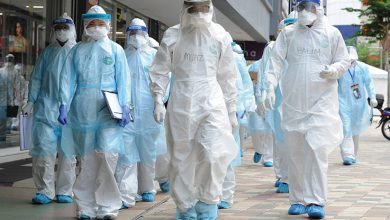Fishing Village – A Testimony of Religious Tolerance
By Jerry Francis
The existence of a small century-old Catholic chapel in a fishing village in the estuary of Sungai Sepetang in Perak is a testimony of religious tolerance. Although there is not a single Christian in Kuala Sangga, the St Anne chapel has been rebuilt and maintained.
And occasionally, candles are also being lighted and placed at the altar and the main statue.
The 100-odd residents of a closely knit Teochew community in the village are all devotees of the Chinese temple in the village.
I was with some members of my family on a tour of Kuala Sepetang (formerly known as Port Weld) recently, when our guide told us of the chapel in a fishing village nearby.
I must confess that though a Catholic, who has been residing in Perak for many years, I have not heard of the chapel. Therefore, I was very curious and eager to visit it.
It took us about half an hour by motorboat from Kuala Sepetang to Kuala Sangga, located on a mangrove island. It is only approachable from the river.
We disembarked on a concrete jetty and walked along its narrow bridge for about 30m to the houses, which were built on stilts along the shore with the back to the mangroves swamp. The whole village is connected by long concrete and wooden bridges. The village’s modest ‘kopitiam’ is the first place a visitor will see on arrival.
There is no water and electricity supply. The villagers collect rainwater and installed small generators for electricity.
We arrived in the afternoon and the scene was typical of fishing villages in the country. Some of the villagers were in small groups watching television or having their own discussions. While a few were seen mending their fishing nets.
We walked to the western end of the village, where the Poay Chhee Chinese national-type primary school is located. In fact it is the best building on the island. A concrete building constructed on solid ground. Its pastel green walls are decorated with drawings of dolphins and turtles.
On the eastern side is the pristine St Anne chapel. A small concrete building sandwiched between a row of houses.


It is a white building with a large statue of St Anne in front. There is an altar, a few pews and a number of smaller statues inside the chapel.
Also on display inside is a list of names of those, Catholics and non-Catholics, who had donated towards the construction of the new building.
The chapel was built when a group of Catholics from Teochow, China, came around the end of the 19th Century to set up the village.
During the Feast of St Anne in August each year, priests and groups of Catholics would come and hold mass in the chapel.
In 1954, the old chapel miraculously escaped a blaze. Most of the houses in the village were destroyed, but the fire stopped short at the chapel.
According to our tour guide, the villagers initially wanted to move the chapel out as there are no longer any Christians in their midst.
They consulted the deity in their temple through a medium and were told that the chapel must not be moved out of the island.
So the villagers decided that not only would they look after the chapel, but also launch a fundraising drive to rebuild the old wooden and zinc building.
Kuala Sangga is a thriving fishing village, specializing in fish breeding in cages and cockle farming. However, there are signs everywhere that the village is dying.
A number of houses have been left abandoned and the population has dropped to just about 100 residents and the enrolment of the school has also reduced to only 11 pupils.
Most of the children, who had sought their secondary education away from the village, must have refused to return to the village as there are no prospects for them.
Many villagers have also bought houses in the mainland and moved their families there. The village is now just their operational base.


